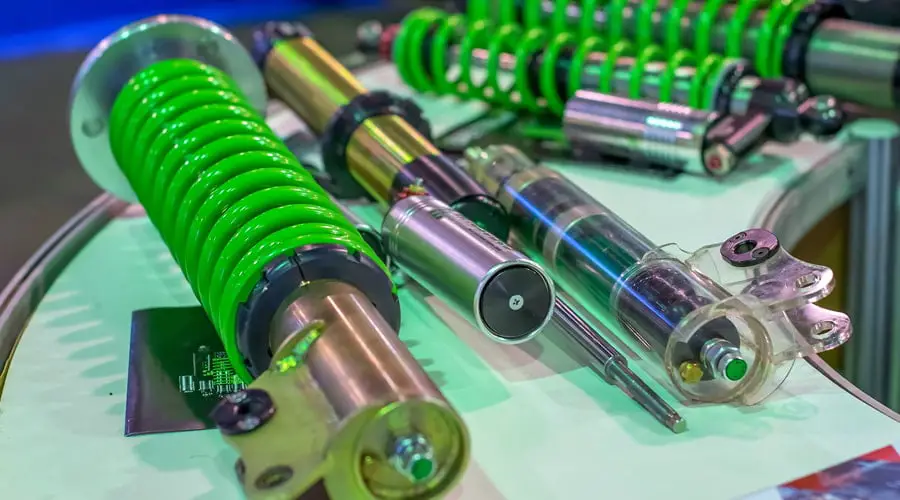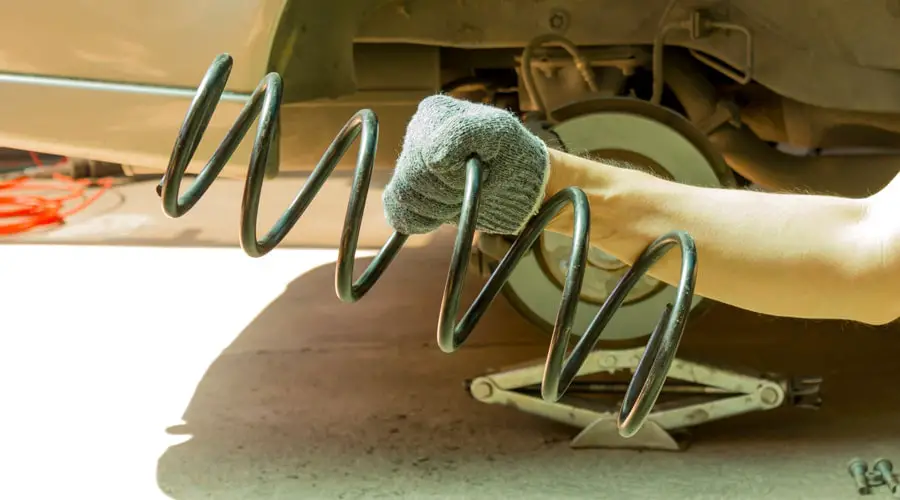
Source: canva.com
Your vehicle should have regular maintenance work and checks done to make sure it is in the best shape possible. Good vehicle maintenance helps keep it running well and can often help reduce the number of costly repair bills. Your shocks are no different. They need to be checked on a regular basis but you can also keep your eyes and ears open for signs that there might be trouble.
Shocks can go bad over time. It doesn’t happen all at once. Your once smooth ride will become bumpy and your control over the car itself may become a little more haphazard. The problem with it happening gradually is you won’t notice the change until it is more extreme. You also may have trouble gauging the mileage at which you need to get new shocks. The variables change based on each driver and their vehicle. So, knowing what signs you should be aware of will help.
Shocks
When your shocks are in good shape, they help your vehicle manage bumps, potholes, swerves, and sharp turns. They help balance the vehicle by controlling the side to side, front to back, and up and down shifting of the vehicle’s weight while driving and make sure the tires are on the road at all times.
Shocks are one part of the car that is constantly at work. They are linked to other parts of the vehicle to make sure it stays safely on the road. Specifically, shocks do the following:
1. Keep tires in contact with the road making sure that they don’t move up and down too much.
2. Stability when you speed up, stop, or have to make a turn.
3. Keep tire tread wear even and help maintain wheel alignment.
4. Add comfort to your drive by absorbing the bumps and jolts when the road surface is rough.
5. Keeps tire wear down allowing for a longer life expectancy.
6. Help springs do their work by alleviating the excess pressure on the suspension system, reducing excessive wear and fatigue.
Symptoms of Bad Shocks
There are some simple ways to tell if shocks are bad and need to be replaced but you need to know what you are looking for or listening to. Here are the top four:

Source: canva.com
1. Your ride is no longer nice and smooth. Ride quality varies from vehicle to vehicle but after driving yours, you should know what it feels like when it’s at its best. You may have a tight and bouncier ride on a pickup or one that feels looser like a luxury car. All vehicles have been designed to react in a particular way depending on their purpose. You are the only person who knows how your personal vehicle handles day to day. If you notice that it is bouncing more, clunking in the steering wheel, or maybe tilts too much when you are turning then you may want to have the shocks inspected.
2. When shocks go bad, your vehicle will nosedive. This is more noticeable in larger vehicles. It happens when you press on your brakes and the front of the car drops and points down to the ground. It’s not so extreme that you flip over but it can cause problems. You may end up with longer braking times or shaking steering wheel because the shocks can no longer handle the weight of the vehicle itself.
3. Your vehicle feels like it has a rolling motion or body roll. This means the overall movement has changed. You’ll notice this most on turns and it will feel like you are leaning.
4. The back end drops when you accelerate. This issue feels like your car is squatting when you are accelerating from a stop. If the shocks are in good shape, the weight of vehicles should be adequately supported when you are accelerating. If they are bad, you find that the back end drops when you press the gas pedal and accelerate. The momentum shifts to the back and raises up the front.
Shocks are Not Just About a Smooth Ride
Newer vehicles are engineers to have high-end electronic safety system stability enhancement, ABS, traction control, and more. These work in conjunction with each other to make sure your vehicle stays on the road and offers the most stability possible.
If you have to stop fast or swerve, your vehicle sends an instant signal to the brakes and other parts that need to respond. If your shocks are worn, they may not respond to those signals as they should. Your crash prevention system won’t work as it was designed to and there is reduced control when driving. If the system does what it was designed to do then your control drops. Stopping distance gets longer and your brakes and tires wear faster plus there is an added strain on the springs.
Final Thoughts
Knowing how to tell if shocks are bad is important due to the amount of wear and tear that is put on them. Consistent and regular inspection is important. Watch for the signs mentioned about but it doesn’t hurt to have your shocks looked at closely every 12K or if you notice one of the above issues. Be aware of any gradual changes so you are not caught off guard. While a smooth ride is a good reason to make sure your shocks are in good shape, you also want to make sure that your vehicle’s electronics system and suspension are doing exactly what they are designed to do. Taking care of your shocks means the other systems are doing what they should as well.